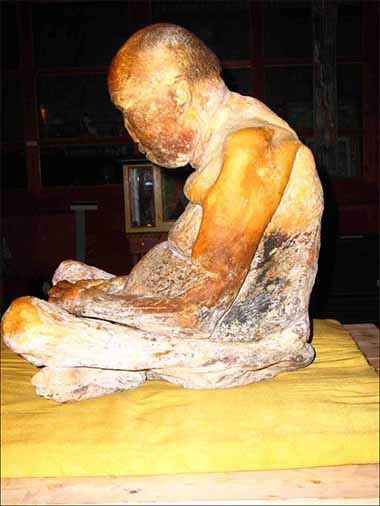Will the Incorrupt Bodies of Saints Ever Be Explained ?

Some saints would perform miracles long after their death. Indeed, many of them seem to be spared by the natural process of decomposition, which remains the lot of ordinary people. Without any particular conservation provision having been made against them, the remains of certain saints remain in the state they were in when they died.
Saint Bernadette of Lourdes
Sainte Bernadette died in 1879, at the age of 36. In 1908, her coffin was opened and her body appeared as it was right after her death. The veins on her forearms were a delicate blue color and were slightly protruding. The hand nails were intact. In 1919, the coffin was opened again and the saint presented the same appearance as eleven years earlier. Covered with a layer of wax, her incorrupt body is today exposed in a reliquary at the Sisters of Charity of Nevers.
Other cases of incorrupt bodies of saints
In the north-east of England, the remains of Saint Cuthbert of Lindisfarne, who died in the year 687, were still incorrupted in the 16th century. His body therefore went through nine centuries without decomposing.
In 1922, the grave of Saint Andrew Bobola was desecrated by members of the Red Army. The body of this saint, dead since 1657, was also perfectly preserved. By 1917, his remains had been found intact and exposed, so that believers could pray there. Today it is kept in a church in Warsaw.
It would seem that in particular the bodies of stigmatized people remain spared from decomposition. Stigmatas appeared in Saint Catherine of Siena in 1375. She prayed to God to make them disappear, only pain lasting. This wish was granted to her. However, after her death in 1380, stigmatas appeared again under her still incorrupted skin. In 1430, the pope gave permission to exhume and dissect her body in order to preserve relics. Four centuries later, in 1855, a last puncture was taken and it was noted that there had been no alteration.
The incorrupt body of a Siberian lama

In 1927 died Dashi-Dorzho Itigilov, the Buddhist spiritual leader of Siberia, at the age of 75 years. Previously, he had asked his students to come, thirty years later, “to visit his body and observe”. In 1957, his followers exhumed his body and found him as he had died: in the lotus position, legs crossed. The religious theme being prohibited in the USSR of the 1950s, the body was buried again and information only circulated in Buddhist circles.
In 2002, the body was again exhumed, at the request of the young lama Bimba Dorschijev, who had met an old monk who, in the 1950s, attended the scene and still knew the location of the body. Bimba Dorschijev witnessed the event, assisted by two forensic technicians, a photographer and a dozen other witnesses: Itigilov's incorrupt body was fully preserved. Today, his remains, still in the lotus position, are in a cloister in Ivolginsk. A reporter for the New York Times wrote an article on the lama's body: seated, surrounded by candles and metal cups filled with oil, on a simple table. The body displays unmistakable similarities with its photo dated 1913. Its limbs are flexible, its skin supple, its nails intact and its hair still short.
“This is the greatest miracle I have ever witnessed in my entire life,” said Hambo Lama Ajuschejev, spiritual leader of the monastery since 1995. “This proves that there are apparitions on which the time has no hold. Many people do not see the obvious. And if they see it, they don't want to understand it.”









































































































































































































































































































































